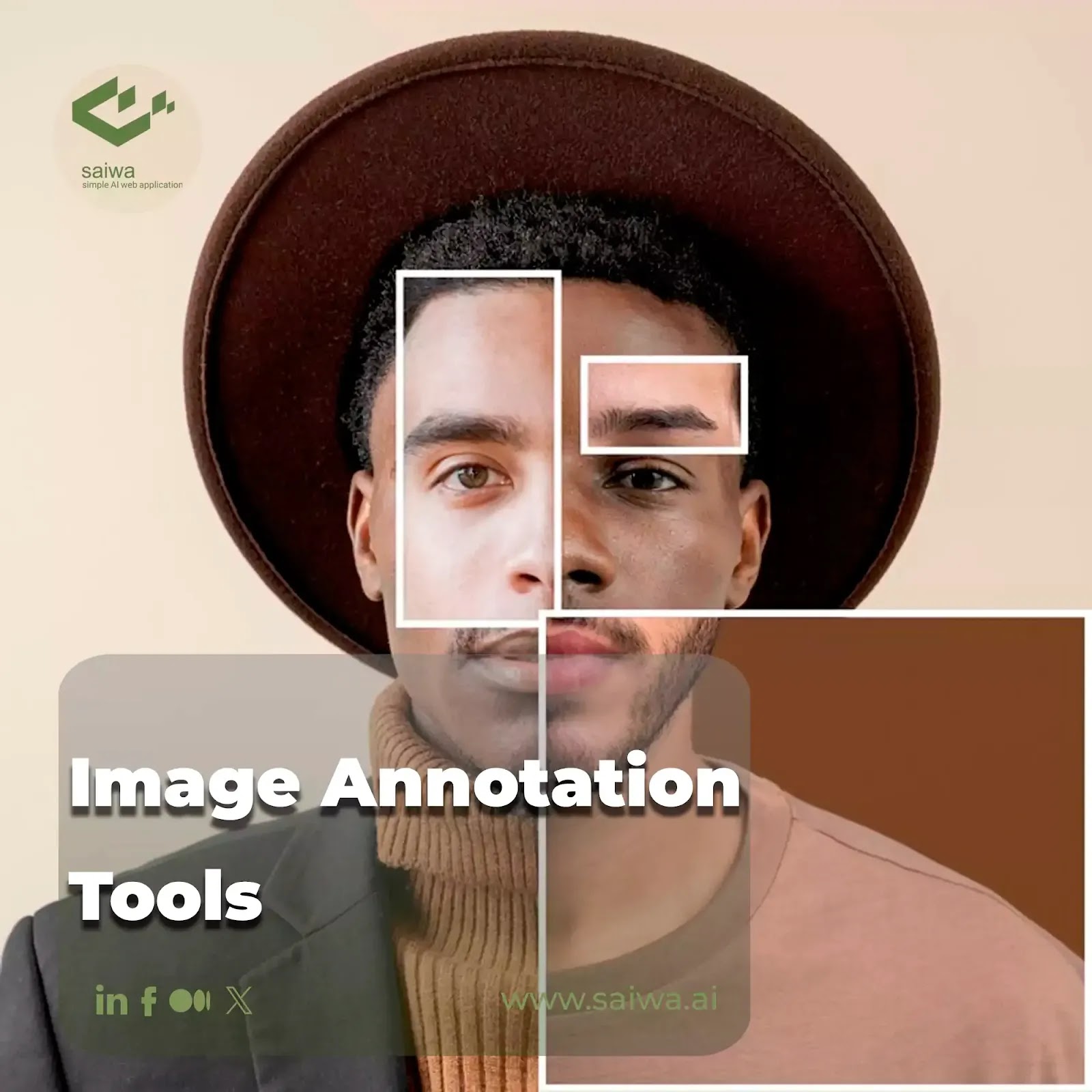Unveiling the Power of Image Annotation Applications
Machine learning powers amazing AI
advancements, but it needs data, specifically labeled data. This is where image annotation
applications come in. These unsung heroes act as a bridge between human
perception and machine learning by allowing us to label images with information
machines can understand.
Imagine a self-driving car needing to
spot pedestrians. Image annotation applications are used to label countless
images with boxes around pedestrians, training the car's AI to recognize them
in real-time.
Why are image annotation applications so important?
- Fueling AI development: They make creating labeled data
sets faster and cheaper, essential for training machine learning models.
- Enhancing accuracy: Precise annotations ensure AI
models learn from the most accurate information, leading to better
performance in tasks like object detection and facial recognition.
- Facilitating diverse applications: From self-driving cars to
medical diagnostics, image annotation applications are behind a wide range
of AI-powered solutions.
What can image
annotation applications do?
- Annotation tools: Users can draw boxes, shapes, or
create masks to highlight specific objects or areas in an image.
- Classification labels: Users can assign labels like
"cat" or "car" to images for tasks like image
classification.
- Collaboration features: Some applications allow teams to
work together on annotation projects.
- Data management: They often provide tools to
organize, store, and export labeled datasets for use in machine learning
models.
Choosing the right image annotation application
There are many options available, so
choosing the right one depends on your needs. Consider:
- Project requirements: The type of annotations you need
(boxes, segmentation) and the project's complexity.
- Team size and collaboration needs
- Budget: Free, open-source options exist, as well as subscription-based
enterprise solutions.
- Scalability: If you anticipate large-scale
projects, ensure the application can handle a significant volume of images
and data.
The future of image annotation applications
As AI evolves, we can expect
advancements in image annotation applications, such as:
- Automated annotation: Machine learning will be used to
automate some aspects of the process.
- Active learning: Applications will become more
intelligent, suggesting which images require annotation for optimal model
training.
- Standardization of annotation formats: This will
streamline collaboration and data sharing across different platforms.
The human in the loop: Quality control remains crucial
While automation is making strides,
human expertise is still vital. Image annotation applications often integrate
quality control measures, allowing users to review and validate annotations.
This ensures the accuracy and consistency of labeled data, which is essential
for optimal AI model performance.
Ethical
considerations of image annotation
The increasing reliance on image
annotation applications raises ethical considerations surrounding data privacy
and bias. It's essential to ensure images are sourced ethically and that
annotation tasks are performed with data privacy regulations in mind.
Additionally, we need to be mindful of potential biases that may creep into the
process, as these biases can be transferred to the trained AI models.
By understanding the power and
potential pitfalls of image annotation applications, we can harness their
capabilities to build a future of responsible and effective AI.
Exploring
Specific Use Cases:
- Medical Imaging: Image annotation is crucial for
training AI models to analyze medical scans for diseases like cancer or
diagnose specific conditions.
- Self-Driving Cars: As mentioned earlier, these
applications are essential for training AI models to recognize objects
like pedestrians, traffic signs, and other vehicles on the road.
- Satellite Imagery: Annotated satellite images can
be used to monitor deforestation, track weather patterns, or even map
uncharted territories.
- Retail and E-commerce: Image annotation helps AI models
recognize and categorize products in images, enabling features like
automated search and personalized recommendations.
The Future of Work and the Rise of the "Annotation
Specialist"
As the demand for high-quality labeled
data grows, a new type of specialist might emerge: the annotation specialist.
These individuals would possess a deep understanding of image annotation best
practices, data quality control, and potential biases.
The
Democratization of Image Annotation Tools
With the increasing ease of use and
affordability of image annotation tools, we might see a future where citizen
science plays a role in data collection and annotation. Imagine everyday people
contributing to datasets for environmental monitoring or wildlife conservation
projects.
The Role of AI
in the Annotation Process
While human expertise remains crucial,
AI can play a more significant role in the future of image annotation. We can
expect advancements in areas like:
- Automated Pre-annotation: AI can suggest initial
annotations for images, which human annotators can then refine or confirm.
- Active Learning: AI can identify the most
informative images for annotation, optimizing the use of human effort.
- Bias Detection and Mitigation: AI can help identify and
mitigate potential biases that might creep into the annotation process.
The Importance
of Explainable AI (XAI)
As AI becomes more integrated into
image annotation workflows, the concept of Explainable AI (XAI)
becomes even more critical. XAI helps us understand how AI models arrive at
their decisions, which is crucial for ensuring trust and fairness in AI-powered
applications.
Saiwa is an online platform which provides privacy preserving artificial
intelligence (AI) and machine learning (ML) services, from local
(decentralized) to cloud-based and from generic to customized services for
individuals and companies to enable their use of AI in various purposes with
lower risk, without the essence of a deep knowledge of AI and ML and large
initial investment.






Comments
Post a Comment